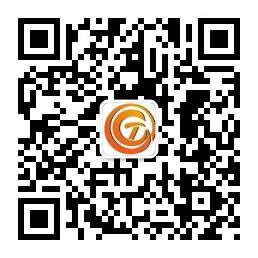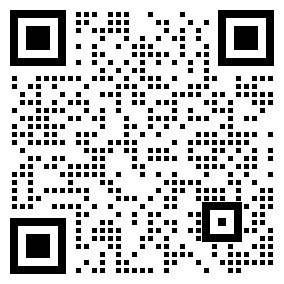The Inter-Integrated Circuit (IC) communication protocol is a serial communication protocol developed by Philips (now NXP Semiconductors) in the early 1980s. IC protocol design is simple, has the characteristics of low cost and low power consumption, and is often used for short-distance data transmission, especially in the communication between microcontrollers and multiple peripheral devices. The main feature of the IC protocol is that only two signal lines are required: the data line (SDA) and the clock line (SCL).
1. Basic structure of IC communication protocol
IC communication uses a master-slave communication architecture, which includes a Master device (Master) and one or more Slave devices (Slave). The master device is responsible for generating the clock signal and initiating the data transmission, while the slave device responds to the master's request.
1.1 IC Bus
The IC bus has two basic signal lines:
Serial Data Line (SDA) : Serial data line for data transmission. Data is transmitted in bits online, SDA lines are bidirectional, and both master and slave devices can send and receive data on the bus.
Serial Clock Line (SCL) : indicates the serial clock line through which the master device generates clock signals to synchronize data transmission.
The electrical characteristics of the IC bus are usually open-drain or open-collector, which means that when the device drives the SDA and SCL lines, the signal can only be pulled down (0), while pulling up (1) is provided by the pull-up resistor.
2. Basic working principle of IC communication
IC protocol is serial communication based on clock synchronization. All devices share the same pair of SDA and SCL lines, and the master device is responsible for controlling the generation of clock signals, and data is transmitted synchronously according to the clock signals.
2.1 Communication Process
IC communication usually involves the following steps:
Start Condition:
The start signal is initiated by the master device. When the SDA line jumps from a high level to a low level, the SCL line remains high, and this signal marks the beginning of communication.
The start signal tells all devices on the bus that a subsequent data transfer is about to begin.
Addressing:
On the IC bus, each device has an address (7-bit or 10-bit address). The master sends the target to the address of the slave to the bus, and the slave responds to determine if it wants to communicate with the master.
The address is usually 7 bits (0 bits), with the next 8 bits representing the address of the target device. If the 10-bit address mode is used, two bytes are used to represent the address.
The address is followed by a read/write flag bit (R/W). When the read/write flag is 0, it indicates a write operation, and 1 indicates a read operation.
Data Transfer:
Data is transmitted synchronously on the SDA line according to the clock signal, transmitting 8 bits (1 byte) of data at a time. After each byte is transmitted, the receiver sends an acknowledgement bit (ACK) indicating that the received data is valid.
If the receiving device fails to receive the data, it sends a non-acknowledgement bit (NACK) to notify the sending device to stop the transmission.
Stop Condition:
The stop signal indicates the end of communication. When the SDA line jumps from low level to high level, the SCL line remains high, indicating the end of communication.
2.2 Timing
IC communication is synchronous, data transmission needs to rely on the clock signal SCL. Each bit of data is transmitted synchronously by a clock signal. In IC communication, data must be sampled along the rising or falling edge of the clock signal, so timing control is key to the IC protocol.
The following are the timing characteristics of IC communication:
SDA changes: When the SCL is low voltage, the SDA line can change freely; The level of the SDA line must remain constant during the high power level of the SCL.
Clock synchronization: A clock signal is generated by the master device over the SCL line for each data transmission, and data bits are sampled at the rising or falling edge of each clock cycle.
3. Data transmission format of IC protocol
Each data transfer follows a certain format:
Starting condition: The main device pulls down the signal from the high power level through the SDA, marking the start of transmission.
Device address: The device address is 7-bit, followed by a flag bit (read/write bit).
Data byte: Each time a byte of data (8 bits) is transmitted, the receiver needs to return an ACK bit.
Stop condition: After the transmission is complete, the master device is pulled up from the low level through the SDA, marking the end of the transmission.
4. Advantages and disadvantages of IC protocol
4.1 Advantages
Simplicity: The IC protocol is relatively simple, and only two signal lines (SDA and SCL) are needed to achieve communication between devices, which is easy to implement.
Multi-device support: IC allows multiple slave devices to share the bus, and one master device can communicate with multiple slave devices.
Low cost: ics use two wires to communicate and do not require additional hardware support, so the cost is lower.
Short-range communication: ics are suitable for short-range communication and are commonly used for communication within single-board devices and embedded systems.
4.2 Disadvantages
Slower communication speeds: ics generally have lower communication speeds of 100kbps in standard mode and 400kbps in high-speed mode, while higher speeds (such as 3.4Mbps) are also supported, but still lower than other protocols (such as SPI).
Electrical interference problems: Because the IC bus shares the data line and the clock line, it may be subject to electrical interference during high-speed or long-distance transmission.
Bus load Limit: The number of devices on an IC bus is limited by the bus load and power capacity, usually within a few dozen devices.
5. Application scenarios of the IC protocol
IC protocol is widely used in embedded system, sensor, memory, display module, RTC (real-time clock) module, temperature and humidity sensor and other low-speed equipment communication. Ics are also commonly used to connect single-board computers (such as Raspberry PI, Arduino) to external hardware modules.
6. Summary
IC communication protocol is a common low-speed serial communication protocol, which realizes data exchange between devices through two wires (SDA and SCL), and has the advantages of simplicity and low cost. Although its transmission speed is slow and limited by bus load, it is very suitable for short distance and low speed communication, and is widely used in the connection of embedded systems, sensors and other peripheral devices.
免责声明: 本文章转自其它平台,并不代表本站观点及立场。若有侵权或异议,请联系我们删除。谢谢! Disclaimer: This article is reproduced from other platforms and does not represent the views or positions of this website. If there is any infringement or objection, please contact us to delete it. thank you! |


